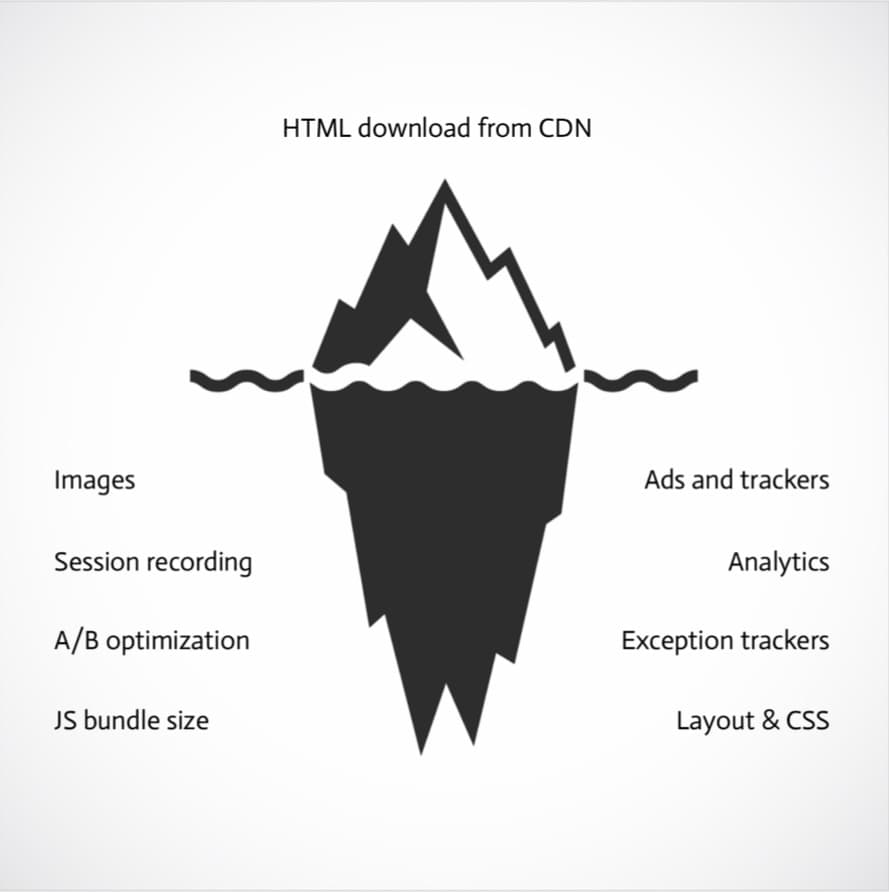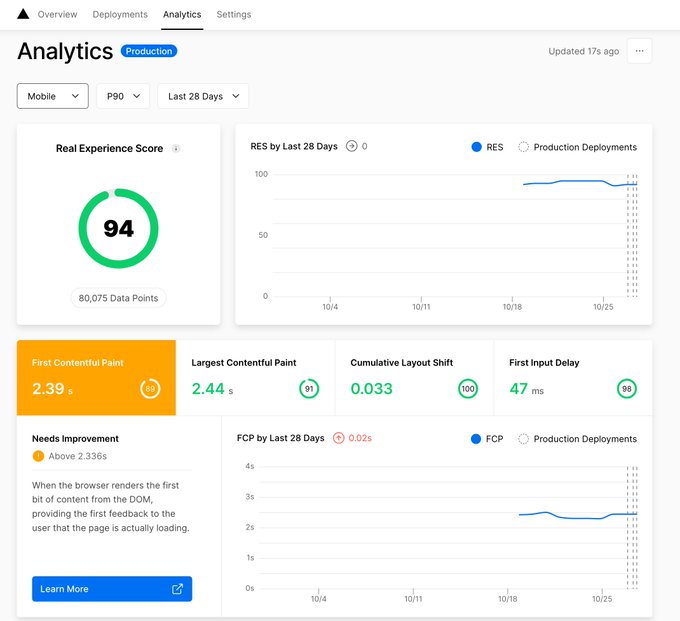Next for Vercel
@rauchg|December 16, 2020 (5y ago)54,286 views
Following our Series A announcement in April, I'm happy to announce a new Vercel $40M Series B round led by GV, with Greenoaks, Bedrock, Geodesic, existing investors Accel & CRV.
Reflecting on the growth of our business, which in 2020 alone added the likes of Airbnb, The Washington Post, Trip Advisor, Scale and Hashicorp as flagship customers, I'm sharing 7 tailwinds behind our acceleration.
Why are teams of all sizes choosing to develop, preview and ship their websites with Next.js and Vercel? Where are we going next?
#Vercel is frontend focused
Jeff Bezos' famous Day 1 letter to shareholders goes:
There are many ways to center a business. You can be competitor focused, you can be product focused, you can be technology focused, you can be business model focused, and there are more. But in my view, obsessive customer focus is by far the most protective of Day 1 vitality.
Applying this to web development, focusing on the frontend is the most customer-obsessive way to build your products.
Every interaction with your customer goes through your frontend, from their first contact with your brand, every purchase, every signup, every article, every form submission.
And each time, your frontend has an opportunity to impress, delight, perform, be accessible and memorable.
What's more, frontend is an area of technological and artistic differentiation, while backend becomes increasingly commoditized, turnkey and undifferentiated.
#Vercel is fast for everyone
For Vercel, being customer focused represents a unique challenge: to delight our developer customer, and to give them the tools and platform to delight their customer.
Next.js pioneered the concept of zero configuration in the React space, letting you focus exclusively on your product.
However, it wasn't just about developer experience. We shipped a lot of the essential preconfiguration to meet the needs of users.
That included out-of-the-box server rendering for fast page boots and optimal SEO, code splitting, production bundle optimization and minification.
This has enabled the frontend developer, motivated by a better experience, to succeed in production.
#Vercel is hybrid
A key ingredient of being customer focused is not being dogmatic, meeting the customer where they are and enabling incremental adoption of the promising new technology.
At the time of its release four years ago, and unlike contemporaries, Next.js took some contrarian bets.
Multi page over single page (SPA). Server rendering (SSR) over spinners. Dynamism everywhere instead of just the client side.
Over time, new optimization opportunities emerged, like static site generation (SSG), which concretely means pre-rendering pages and automatically caching them at the edge.
Pure server rendering wouldn't have been enough. Pure static (Jamstack) is not enough. Giving the developer the power and optionality of SSR and SSG on a per-page basis? That works.
#Vercel is everywhere
JavaScript is the lingua franca of the frontend world, but it also has the unique property that it can run everywhere.
Everywhere as in the build process (SSG), the origin (SSR), the edge, and the final frontier: the client's device.
Vercel embraces this serverless everywhere computing model. When you push to Git, we automatically start building your project. At that time, frameworks like Next.js run your code to pre-render pages before they're ever accessed by the user.
But the computation doesn't stop there. The build process is capable of outputting serverless functions in addition to static assets. These will execute code on demand as users access them, enabling greater personalization and dynamism.
Further down the lifecycle of the request, React brings components alive after the page boots, once again enabling you to run code to enrich the experience with interactivity, realtime data fetching and caching, animation and more.
With Vercel, your frontend also lives everywhere. Your app is automatically pushed to our global edge network, with no management, no overhead, no configuration and… really fast page loads.
#Vercel is realistic
As far as frontend performance goes, a CDN is a key ingredient. However, in reality it only represents a minor contribution to what makes a site exceptionally fast.
The time it takes to download the HTML from the edge is just the tip of an entire iceberg of complexity that represents a challenge to performance.

This oversimplification stems from the fact that performance as it relates to user experience is technically very challenging to measure.
In the world of backend, we can just open up a dashboard and look at our p99 and p999 times and say: this API response takes 42ms. Onto the next one.
When it comes to frontend, we might be compelled to make the same observation about our CDN latency or, worse, PoPs. We would then say: my page loaded in 42ms. Onto the next page.
Measuring how good your pages are has been, until recently, a daunting task because we didn't know what to measure, and therefore, what to optimize.
A breakthrough was recently made by the W3C Web Performance Working Group and Google in the introduction of the Core Web Vitals metrics: LCP, CLS and FID.
These metrics help you ascertain how good your actual user experience is, by focusing on the actual end-user outcomes: how fast the content is put in front of the user's eyes, how little it jitters around, and how fast it reacts to input.
How vital are these metrics in practice? So vital that they'll become a Google search ranking signal starting May 2021.
There are two strategies you can take to prepare.
One is austerity: get rid of all the chat widgets, analytics, advertisements, GDPR cookie popups, and all your JS code. You might also want to shut down your business.
The other one is to address reality, embracing the real mass of the problem. For example, optimizing oversized and slow images with the Next.js image component.
Furthermore, instead of relying solely on synthetic lighthouse tests, our built-in Analytics offering helps you by computing a real experience score based on the web vitals of your actual visitors.
#Vercel is collaborative
When you link your project to Vercel, even before it makes it into production, you have a unique opportunity to share your work.
Development is not confined to localhost:3000, bespoke VMs or a monolithic staging server.
With every push of code and every proposed content change, you get a hyperlink that you can share with anyone in the world. Your frontend is served from the same serverless infrastructure with production capabilities.
This introduces a unique opportunity for collaboration. Everyone from your clients, to fellow team members, to robots, can visit your website and provide early feedback or report bugs.
Furthermore, the decoupling of frontend from backend allows us to integrate systems that enable others to contribute content and data without coding skills.
Want to empower your marketing or technical writing team? Link your Next.js data fetching functions to your favorite Headless CMS. Want to empower your product team? Integrate a feature flagging system and decouple deploy from release.
#Vercel is open
Vercel is built in conjunction with our great community of developers, contributors and partners.
While we consider Next.js to be our lighthouse framework, Vercel is designed to be completely agnostic to it.
Advanced capabilities like our ability to push and update static pages without rebuilding the entire site, to preview proposed data changes, serverless functions, image optimization and even our analytics system are capabilities that any framework can tap into.
The web is an open medium that's constantly evolving and changing and we wanted our platform to embrace that. Whether it's Svelte, Nuxt.js or Gridsome, our commitment is to serve developers and their teams to build a better web.
Our mantra until today has been Develop → Preview → Ship.
We will continue to invest to make this process the most delightful, ensuring top performance every step of the way, doubling down on putting computation everywhere, and help you tackle the iceberg of frontend complexity.
Being customer focused requires a mindset of experimentation coupled with constant feedback. We want Vercel to empower you to ship and Iterate, by helping you discover what to develop next.


